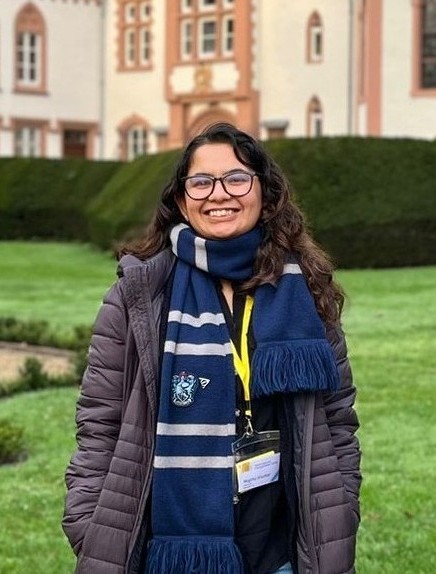Sachsenhausen: A Graveyard of Humanity
I’ve been living in Germany for the past four years, and only recently did I gather the courage to confront one of the most tangible reminders of the country’s darkest chapter. During a visit to Berlin, I visited a Nazi concentration camp—undoubtedly the most chilling place I have ever set foot in.
In 1936, the Nazis constructed a modern concentration camp just outside Berlin—Sachsenhausen. It was designed as a training ground for SS officers who would later run other camps across Europe. Hitler had grand visions for Berlin’s transformation, and the prisoners here were forced to labor in brick factories to bring that vision to life. Throughout World War II, Sachsenhausen mainly held political prisoners and became one of the last camps to be liberated.
We walked to the camp along the T-building—today a tax office, but once the administrative brain of the Holocaust. This building was the headquarters of the “Inspection of Concentration Camps”. The fact that this mundane place was responsible for one of the greatest genocides in the history was horrifying and disturbing.

T-Building
We entered Sachsenhausen through the main entrance, named Station A. The landscape suddenly shifted from lush green gardens to chilling emptiness. The clock above the gate still shows the exact time the camp was liberated, as if history paused to mark that day. Above the gate, the sarcastic words Arbeit macht frei (Work makes you free) are still etched. For many prisoners, the only freedom the Nazis offered was death through forced labor.
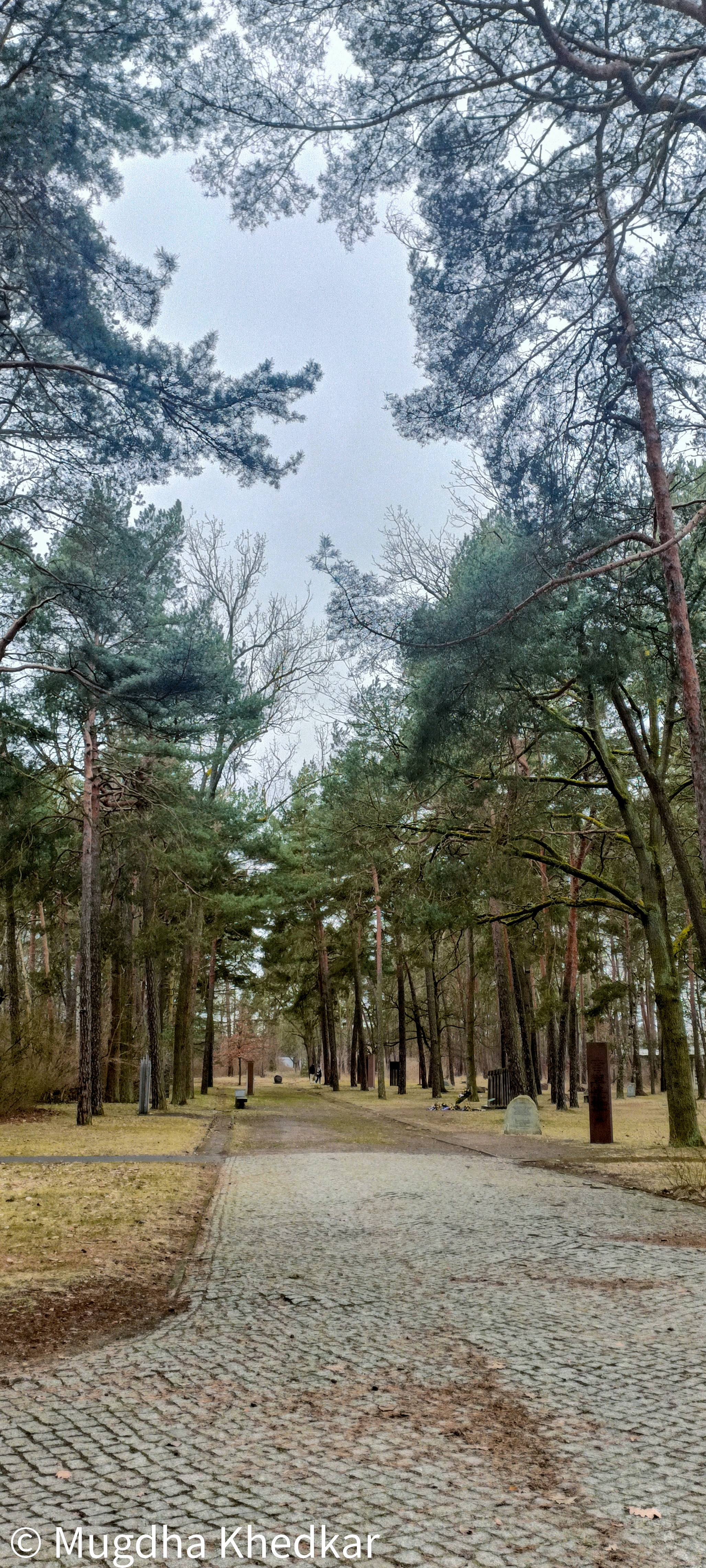
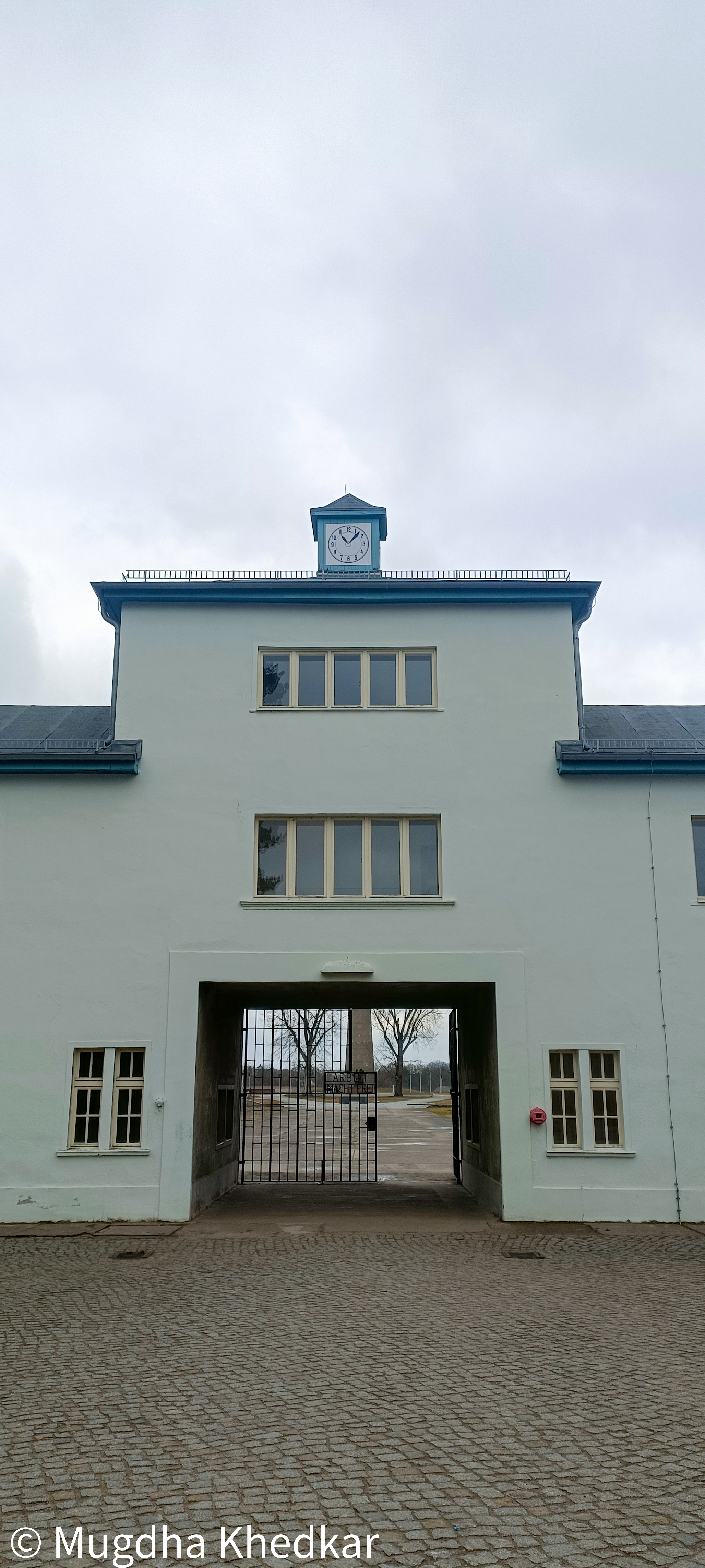
Entering Station A
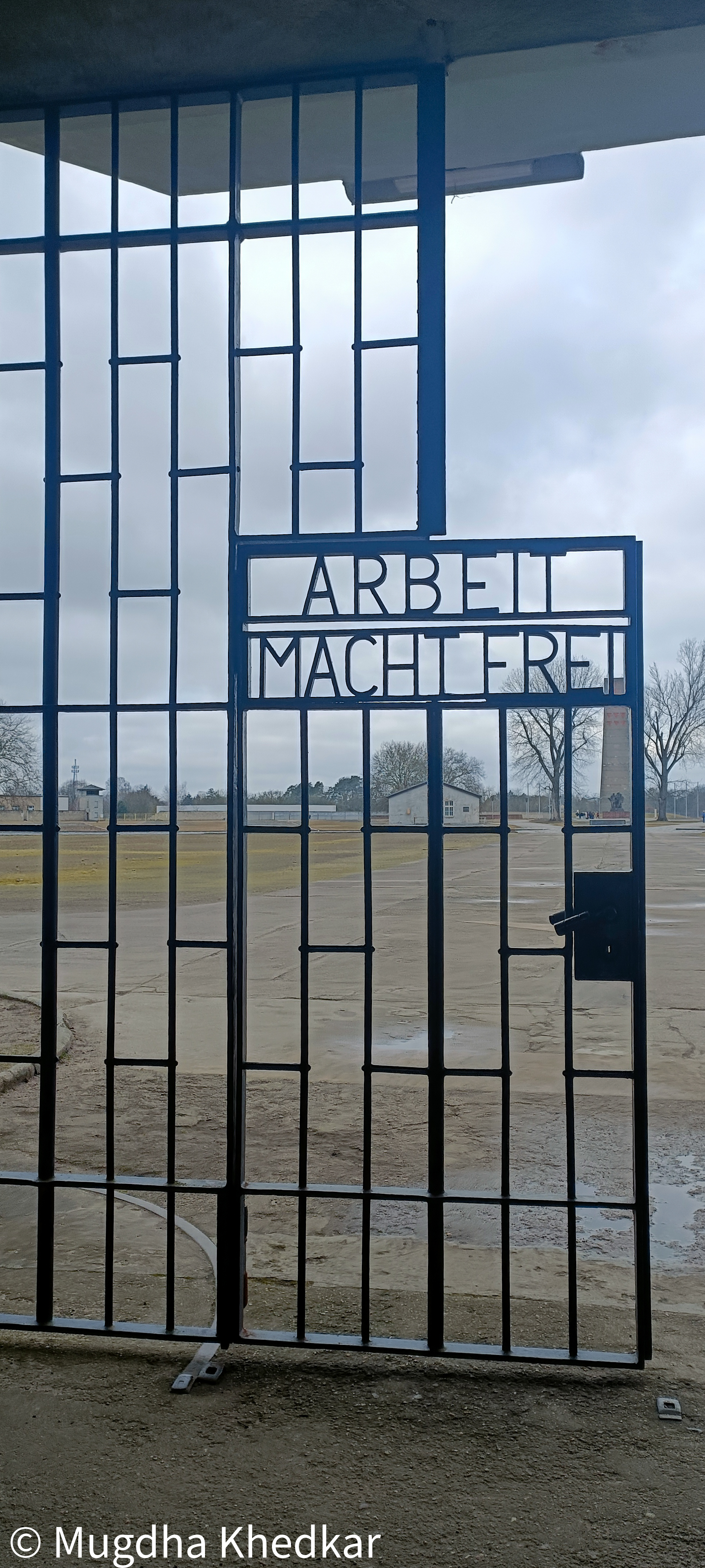
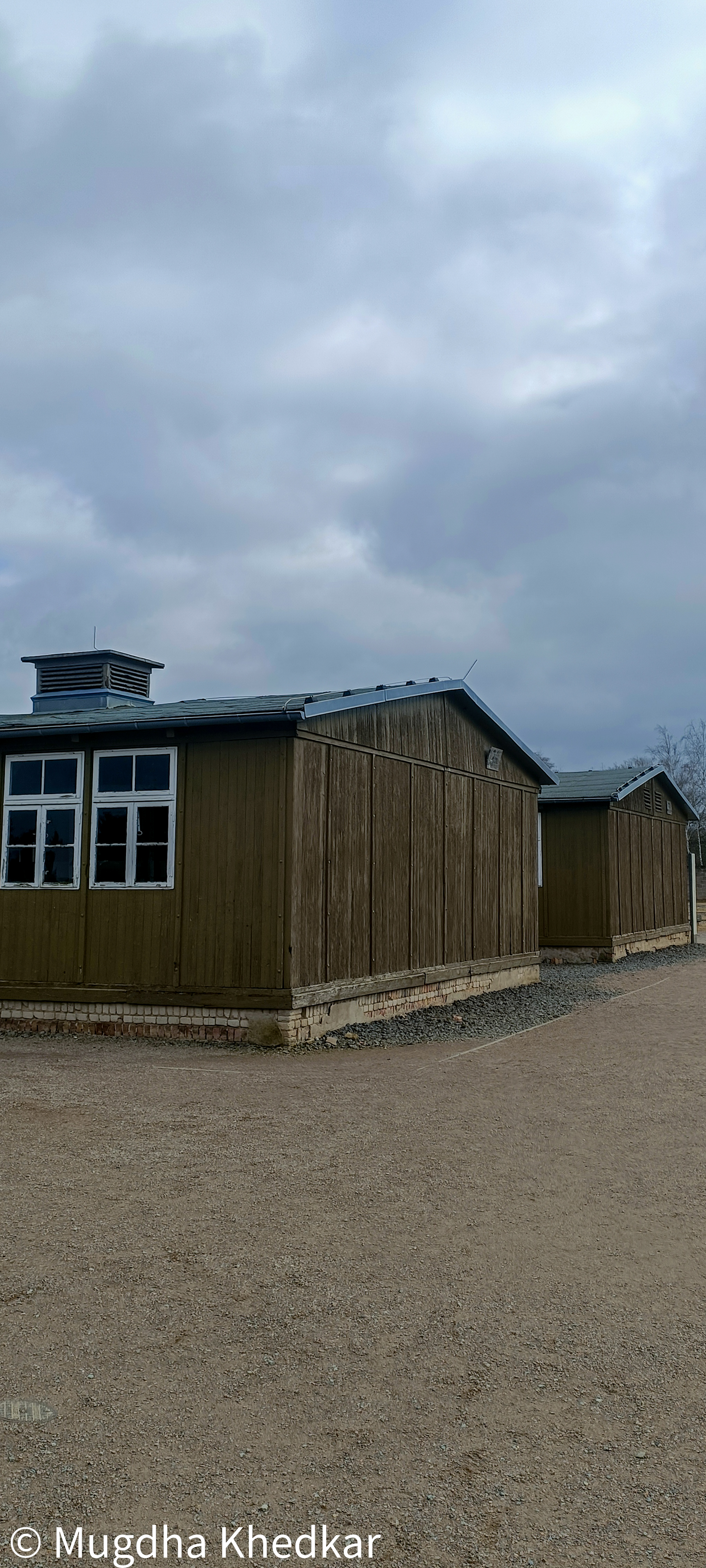
In the huge triangular space of the actual camp, we could see only two barracks/ buildings, which were reconstructed with original materials. We walked across the grounds where prisoners had once been lined up for roll calls, and where many had faced execution. Our tour guide, an Israeli Jew, shared the stories of those who suffered and perished. As he spoke, I kept imagining what his life might have looked like had the Holocaust never happened. His calm narration made the experience all the more impactful. Near the center stood the Liberation Monument, marked by eighteen red triangles—a tribute to the political prisoners who came here from eighteen different countries. Triangles on prisoners’ uniforms were symbols assigned by the Nazis to identify their reason of imprisonment (Jews, homosexuals, etc). A red triangle identified political prisoners.
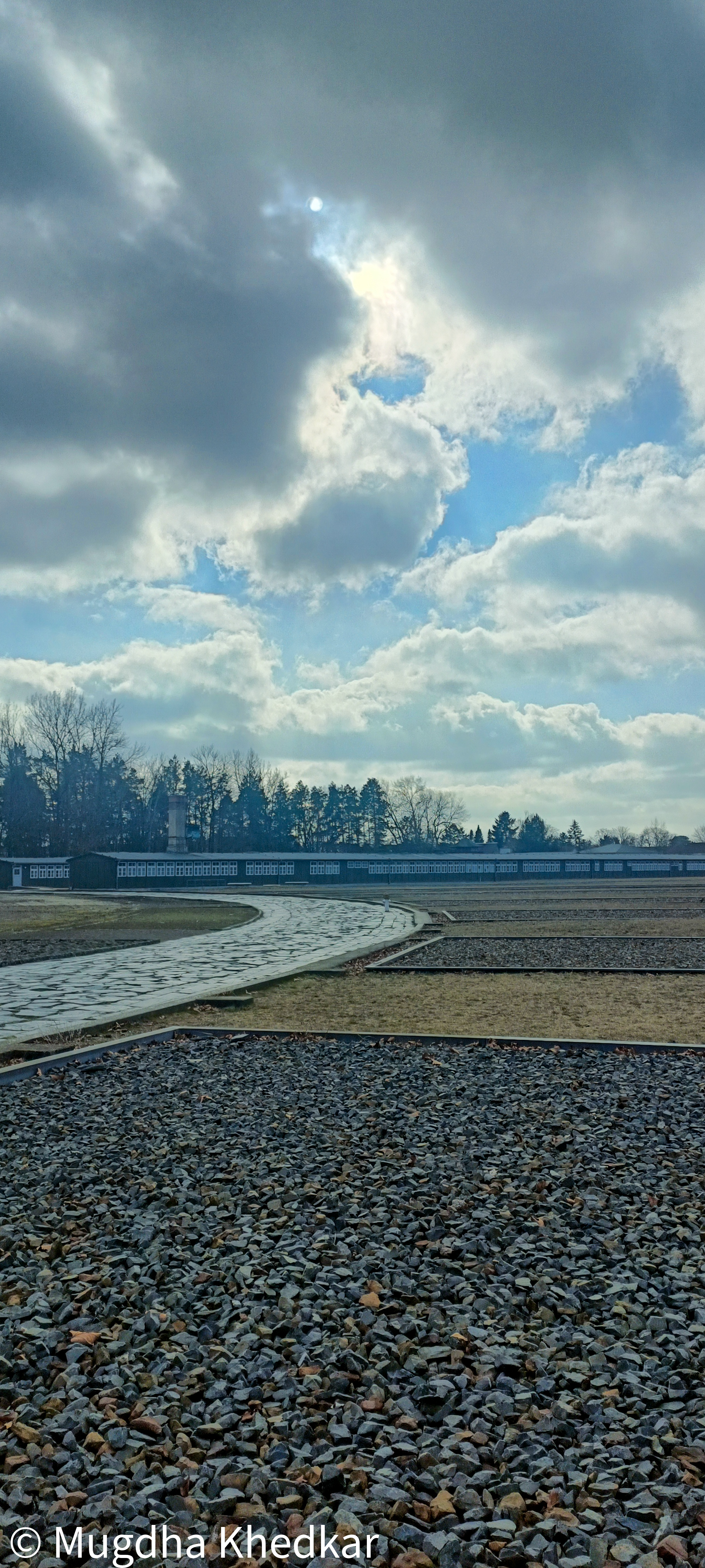
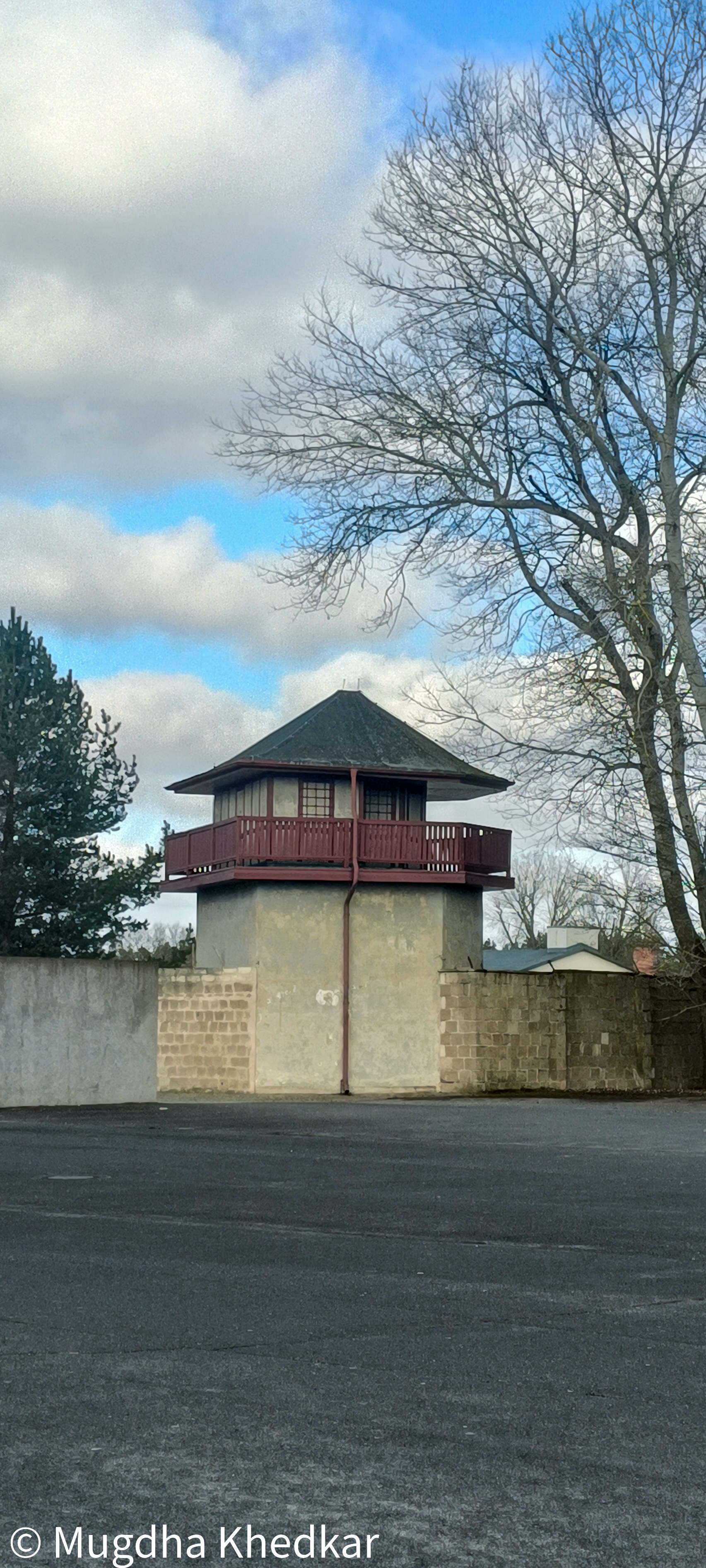
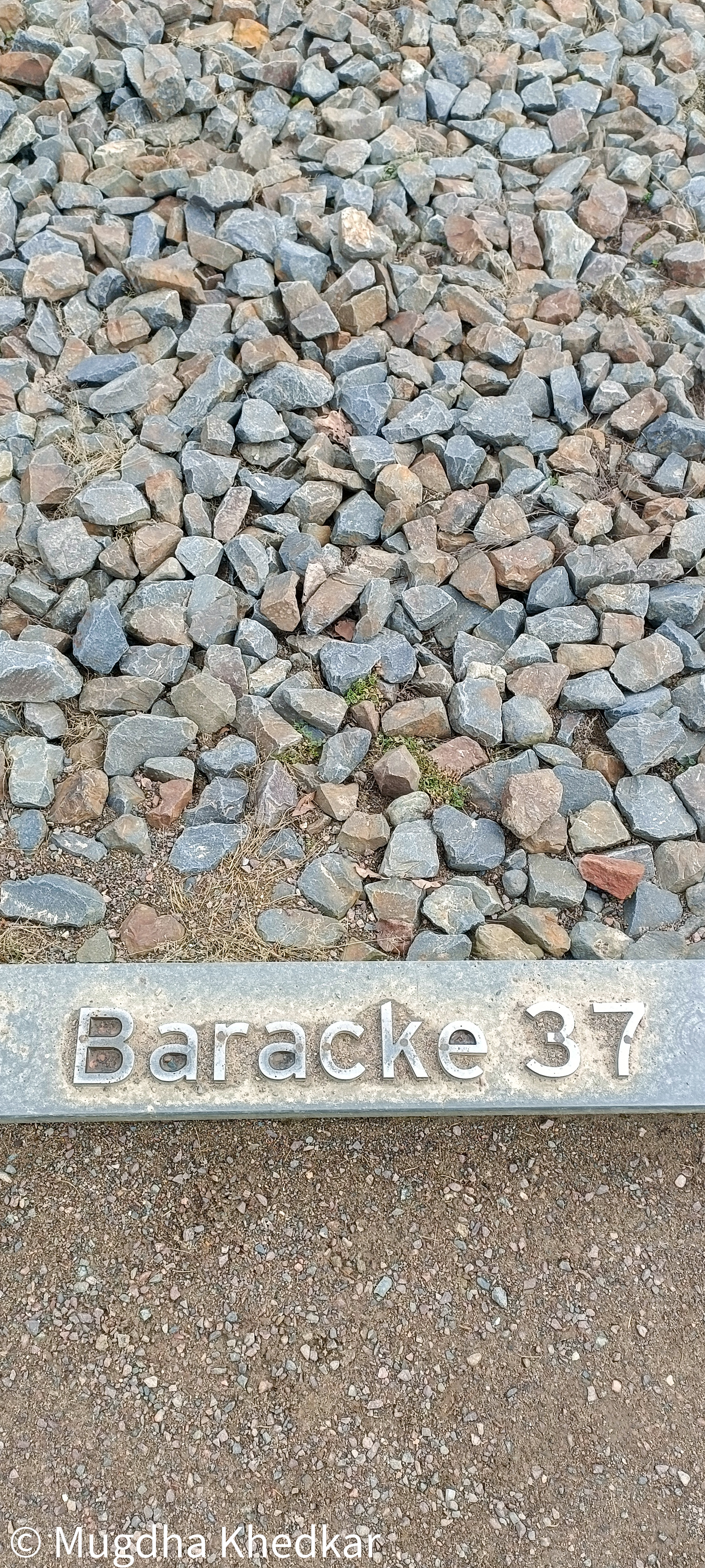
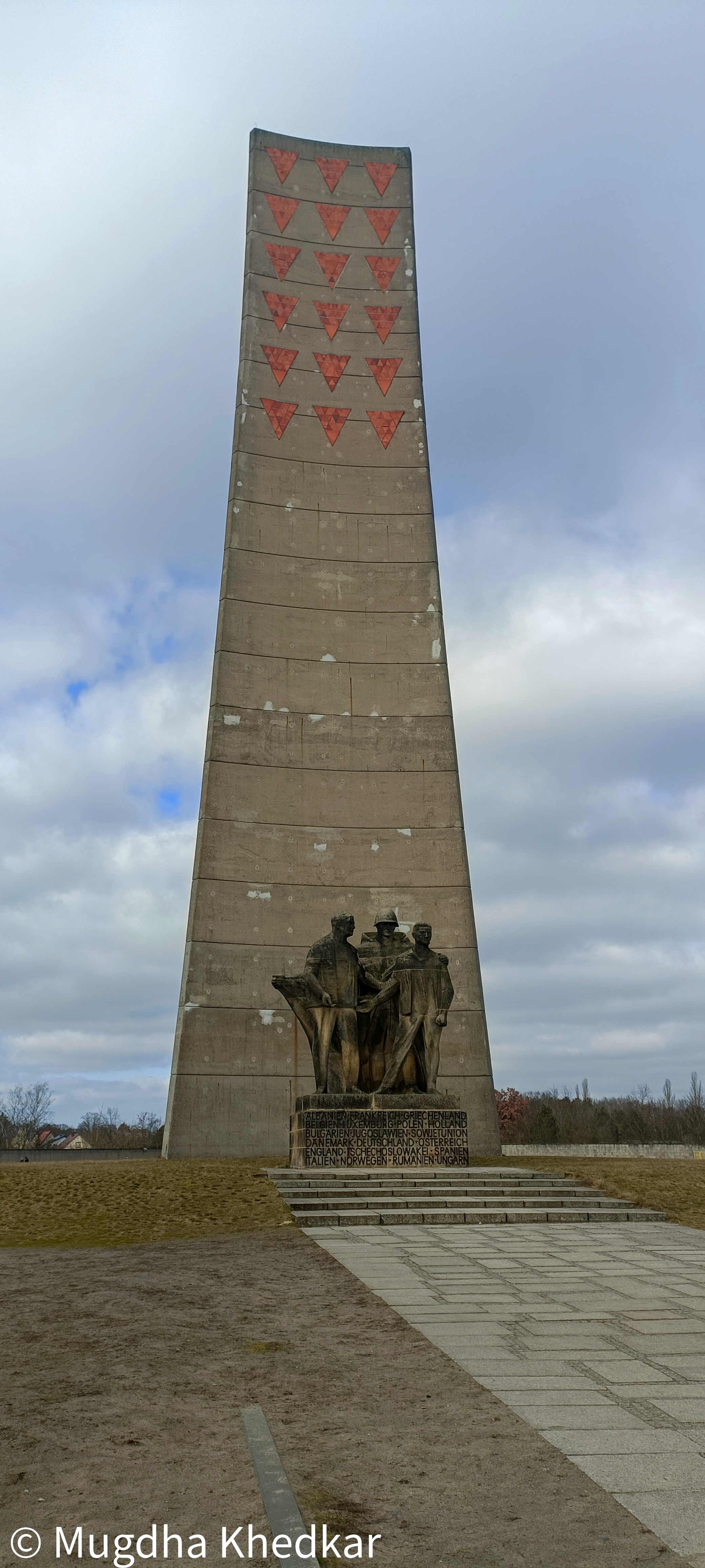
At the far end of the camp was Station Z—the site of the crematorium and the gas chamber. Our guide paused here, then said something I’ll never forget: “The Nazis made their message clear: You enter Sachsenhausen through Station A—and you leave only through Station Z.” That sentence, along with many others he shared, burned itself into my memory. The weight of his words and the silence of the camp left a mark I won’t ever be able to shake.
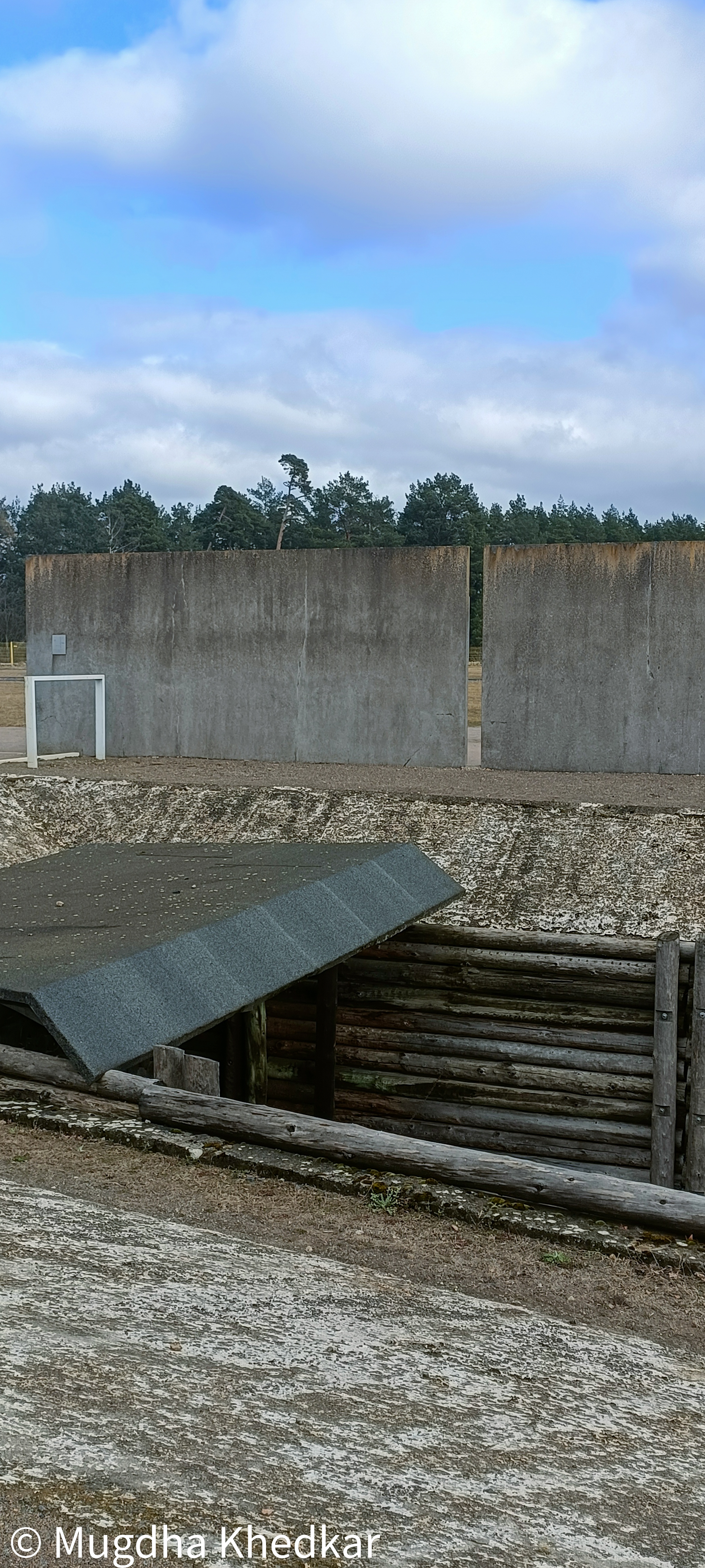
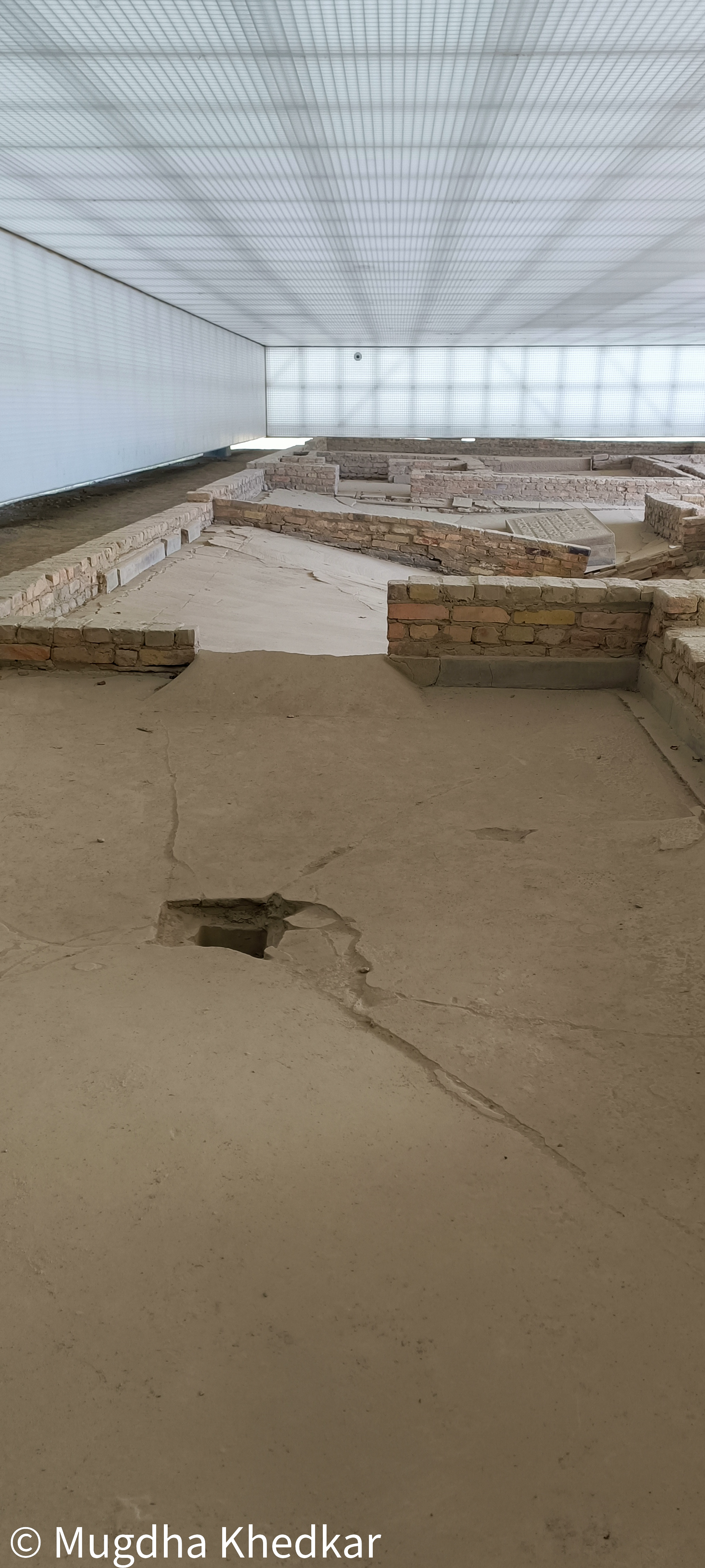
Left to Right: Crematorium, and the gas chamber
Towards the end of the war, around 30 Jews were executed in Sachsenhausen’s gas chamber in Station Z. In total, Sashsenhausen was one of the smallest camps with around 12000 to 18000 prisoners. Visiting this camp felt like the most gentle introduction possible to the darkest chapter in European history—and still, it was utterly harrowing. The bus ride back to Berlin was silent. Heavy.
Our guide ended the tour with a poem, written by someone who spent eight years imprisoned by the Nazis. As he began reading, I silently thought, “Oh no, not a poem.” Poetry has always been my tear trigger—ever since I began writing my own poems. And sure enough, five minutes later I found myself quietly weeping, trying to drown out the silence with loud Bollywood music in my earphones. This experience changed me in ways I could have never imagined. I felt a sudden hatred towards the Nazis coursing through my veins. I don’t think I’ve ever felt anger that fiercely before. It made me question my desire to live here, and stirred a deep concern for where the world is heading.
So, in the same spirit our guide ended the tour, I’ll end this post with the poem written by Martin Niemöller that brought me to tears:
First they came for the Communists, and I did not speak out—
Because I was not a Communist.
Then they came for the Socialists, and I did not speak out—
Because I was not a Socialist.
Then they came for the trade unionists, and I did not speak out—
Because I was not a trade unionist.
Then they came for the Jews, and I did not speak out—
Because I was not a Jew.
Then they came for me—
And there was no one left to speak out for me.
